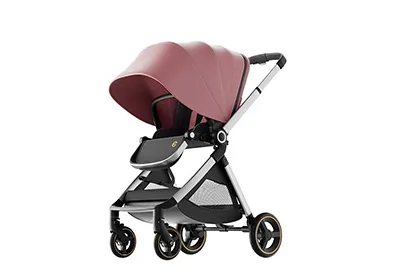
- Afrikaans
- Albanian
- Amharic
- Arabic
- Armenian
- Azerbaijani
- Basque
- Belarusian
- Bengali
- Bosnian
- Bulgarian
- Catalan
- Cebuano
- Corsican
- Croatian
- Czech
- Danish
- Dutch
- English
- Esperanto
- Estonian
- Finnish
- French
- Frisian
- Galician
- Georgian
- German
- Greek
- Gujarati
- Haitian Creole
- hausa
- hawaiian
- Hebrew
- Hindi
- Miao
- Hungarian
- Icelandic
- igbo
- Indonesian
- irish
- Italian
- Japanese
- Javanese
- Kannada
- kazakh
- Khmer
- Rwandese
- Korean
- Kurdish
- Kyrgyz
- Lao
- Latin
- Latvian
- Lithuanian
- Luxembourgish
- Macedonian
- Malgashi
- Malay
- Malayalam
- Maltese
- Maori
- Marathi
- Mongolian
- Myanmar
- Nepali
- Norwegian
- Norwegian
- Occitan
- Pashto
- Persian
- Polish
- Portuguese
- Punjabi
- Romanian
- Russian
- Samoan
- Scottish Gaelic
- Serbian
- Sesotho
- Shona
- Sindhi
- Sinhala
- Slovak
- Slovenian
- Somali
- Spanish
- Sundanese
- Swahili
- Swedish
- Tagalog
- Tajik
- Tamil
- Tatar
- Telugu
- Thai
- Turkish
- Turkmen
- Ukrainian
- Urdu
- Uighur
- Uzbek
- Vietnamese
- Welsh
- Bantu
- Yiddish
- Yoruba
- Zulu
Sep . 22, 2024 07:08 Back to list
stroller
The Evolution of Strollers A Journey Through Time
Strollers have come a long way since their inception, transforming from simple push devices to complex, multifunctional equipment designed to meet the dynamic needs of today’s families. Not only do they provide a practical solution for transporting young children, but they also serve as a reflection of evolving parenting styles, safety standards, and technological advancements.
The history of strollers dates back to the early 18th century. The first known stroller was invented in 1733 by William Kent, an English designer who created a device for the Duke of Devonshire to carry his children around his estate. This early version resembled a small carriage, pulled by a dog or a goat. It was primarily made of wood, featuring a canopy for shade, and it allowed parents to take their children outdoors in style. However, these carriages were cumbersome and not widely accessible to the average family.
As society progressed, so did the design and materials of strollers. By the late 19th century, strollers evolved into more practical versions with the introduction of lightweight metals and wheels. The invention of the foldable stroller in the early 20th century added an element of convenience for families on the go. This innovation allowed for easy storage and transport, making it more feasible for everyday use. Parents could now navigate city streets, parks, and public transport with their children in tow.
The mid-20th century saw a surge in stroller designs with varying functionalities. From umbrella strollers to jogging strollers, parents now had options to suit their lifestyles. The introduction of safety features, such as five-point harnesses and brakes, prioritized the well-being of children. With an increasing emphasis on child safety, manufacturers began adhering to stricter regulations and standards, ensuring that strollers were not only practical but also secure.
stroller

In the 21st century, technology has dramatically influenced stroller design. Today’s strollers often come equipped with features such as adjustable handlebars, built-in canopies, and even tech-friendly components like phone holders and USB charging ports. Some advanced models can sync with smartphones to track stroll distance and monitor the child’s comfort level. Additionally, eco-conscious designs using sustainable materials have emerged, catering to environmentally aware parents.
Moreover, strollers have become more than just a means of transportation; they also serve as a social symbol. The rise of social media has led parents to showcase their trendy strollers, creating a market driven by aesthetics as well as functionality. Brands are continually innovating to create stylish designs that appeal to fashion-conscious parents, ensuring that strollers not only perform well but also look good.
As urban living continues to evolve, strollers have adapted to accommodate the needs of city dwellers. Compact, lightweight, and easy-to-maneuver designs have become essential for navigating crowded public spaces. Manufacturers now offer multi-functional models that can convert into car seats or be easily attached to bicycles, catering to the diverse needs of modern families.
In conclusion, the journey of strollers from their humble beginnings to state-of-the-art models illustrates a fascinating blend of innovation, practicality, and style. As we look forward, it’s exciting to envision how strollers will evolve further, continuing to make life easier for parents while providing a safe and comfortable ride for children.
-
The Ultimate Kids' Four-Wheeler Experience
NewsJul.09,2025
-
The Ultimate Guide to Mountain Bikes: Gear Up for Your Ride
NewsJul.09,2025
-
The New Age of Cycling: Electric Bikes for Every Rider
NewsJul.09,2025
-
The Best Kids Bicycles: Ride in Style and Safety
NewsJul.09,2025
-
The Best 3-Wheel Scooters for Kids: Fun, Safety, and Adventure
NewsJul.09,2025
-
Revolutionize Your Ride: Affordable Electric Bikes
NewsJul.09,2025
-
Finding the Perfect Mountain Bike for Every Rider
NewsJul.09,2025



